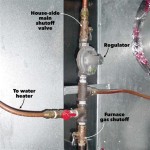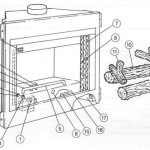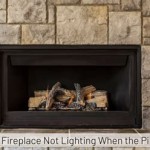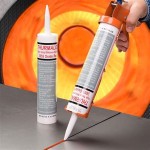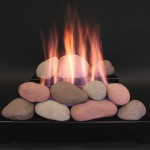How To Redo Your Brick Fireplace
The brick fireplace, once a focal point radiating warmth and charm, can become outdated and detract from a home's aesthetic. Redoing a brick fireplace presents an opportunity to modernize the space, improve its visual appeal, and potentially enhance its functionality. This article provides a comprehensive guide to undertaking a brick fireplace renovation project, covering essential preparation, design considerations, and practical execution tips.
Before embarking on any physical alteration, thorough planning is crucial. This involves assessing the fireplace's current condition, defining design preferences, and budgeting for the project. Ignoring these preliminary steps can lead to costly mistakes and unsatisfactory outcomes.
A comprehensive understanding of the existing structure is the first step in the planning phase. Examine the brickwork for cracks, loose bricks, or crumbling mortar. Note any existing architectural features, such as mantels or hearths, that will be retained or replaced. This assessment will inform the scope of the project and the required materials.
Subsequently, establish a clear vision for the renovated fireplace. Consider the overall style of the room and how the fireplace should complement it. Explore various design options, such as painting, staining, tiling, or cladding the brick. Gather inspiration from magazines, online resources, and home improvement stores. Create a mood board to visualize the desired outcome.
Finally, develop a detailed budget that encompasses all anticipated expenses, including materials, tools, and professional labor, if required. Obtain quotes from multiple suppliers and contractors to ensure competitive pricing. Factor in a contingency fund to account for unforeseen costs that may arise during the renovation process.
1. Preparation is Paramount: Safety and Protection
Prior to commencing any physical work, prioritizing safety and protecting the surrounding area is essential. Brick dust and debris generated during the renovation process can pose health hazards and damage nearby surfaces. Taking appropriate precautions will minimize risks and ensure a cleaner working environment.
The first step involves disconnecting any gas lines or electrical connections that service the fireplace. If unsure about this process, consult a qualified professional to avoid potential hazards. Ensure the fireplace is completely cool and free from any flammable materials before beginning work.
Next, thoroughly clean the brick surface to remove any soot, dirt, or grime. This will improve adhesion for any paint, stain, or adhesive used later in the project. Use a wire brush and a solution of trisodium phosphate (TSP) or a specialized brick cleaner to scrub the surface. Rinse thoroughly with clean water and allow it to dry completely.
Protect the surrounding area by covering floors, walls, and furniture with drop cloths or plastic sheeting. Seal off doorways with plastic to prevent dust from spreading to other rooms. Wear safety glasses, a dust mask, and gloves to protect against injury and exposure to hazardous materials.
Proper ventilation is also crucial, especially when working with paints, stains, or solvents. Open windows and doors to allow fresh air to circulate. Consider using a fan to further improve ventilation.
2. Transforming the Brick: Painting, Staining, or Cladding
Once the preparation is complete, the next step involves transforming the brick surface to achieve the desired aesthetic. Several options are available, each offering a unique look and requiring specific techniques. The most common methods include painting, staining, and cladding.
Painting a brick fireplace is a popular option for creating a modern, clean look. Choose a high-quality masonry paint specifically designed for use on brick. Apply a primer to the brick surface to improve adhesion and prevent the paint from soaking into the porous material. Use a brush, roller, or sprayer to apply the paint, ensuring even coverage. Multiple coats may be necessary to achieve the desired color intensity.
Staining the brick offers a more subtle transformation, allowing the natural texture and color variations of the brick to show through. Select a masonry stain that is compatible with the type of brick being stained. Apply the stain evenly using a brush or sprayer. Wipe off any excess stain with a clean cloth to achieve the desired level of color saturation. Consider testing the stain on a small, inconspicuous area first to ensure the desired effect.
Cladding the brick involves covering it with a different material, such as stone veneer, wood panels, or tile. This option allows for a complete transformation of the fireplace's appearance. Install a suitable backing material, such as cement board, over the existing brick. Adhere the cladding material to the backing using a construction adhesive or mortar, following the manufacturer's instructions. Ensure the cladding is properly aligned and secured.
When selecting a transformation method, consider the overall style of the room, the desired level of maintenance, and the budget. Painting is generally the most affordable option, while cladding offers the most dramatic transformation but can be more expensive.
3. Enhancing the Fireplace: Mantel and Hearth Considerations
The mantel and hearth are integral components of a fireplace, contributing significantly to its overall aesthetic and functionality. Replacing or updating these elements can dramatically enhance the fireplace's visual appeal and create a more inviting atmosphere.
The mantel serves as a decorative shelf above the fireplace opening, providing a focal point for displaying artwork, photographs, or other decorative items. When selecting a new mantel, consider the style of the room, the size of the fireplace, and the desired material. Common mantel materials include wood, stone, and metal. Ensure the mantel is properly sized and securely attached to the wall, following safety guidelines.
The hearth is the non-combustible area in front of the fireplace opening, protecting the surrounding floor from sparks and embers. When replacing or updating the hearth, consider the material, size, and shape. Common hearth materials include brick, stone, tile, and concrete. Ensure the hearth extends adequately in front of the fireplace opening to provide adequate protection. Follow local building codes and safety regulations when installing a new hearth.
If retaining the existing mantel and hearth, consider refinishing or updating them to match the renovated fireplace. Refinishing a wood mantel involves sanding, staining, or painting it to achieve the desired color and finish. Cleaning and sealing a stone or tile hearth can enhance its appearance and protect it from stains and damage.
When selecting a mantel and hearth, consider the fire safety regulations for the specific fireplace type. Ensure that all materials used are non-combustible or fire-resistant and that the mantel is positioned at a safe distance from the fireplace opening.
Beyond the core elements, consider adding decorative elements to further enhance the fireplace's appeal. This might include installing decorative trim, adding sconces or lighting fixtures, or incorporating a custom-designed fire screen. These details can personalize the fireplace and create a unique focal point.
Addressing minor repairs and cosmetic issues can significantly improve the overall appearance of the fireplace. Repair any cracks or chips in the brick or mortar using a patching compound specifically designed for masonry. Clean the brick surface regularly to remove soot, dust, and grime. Consider applying a sealant to the brick to protect it from moisture and staining.
Redoing a brick fireplace is a significant home improvement project that requires careful planning, meticulous execution, and attention to detail. By following the guidelines outlined in this article, homeowners can transform their outdated fireplaces into stunning focal points that enhance the beauty and value of their homes. Remember to prioritize safety, adhere to building codes, and seek professional assistance when needed. The result will be a revitalized fireplace that provides warmth, comfort, and aesthetic pleasure for years to come.

16 Red Brick Fireplace Makeover Ideas

How To Update A Brick Fireplace Homemade Ginger

Brick Fireplace Makeover Before And After Ideas Cool Makeovers Remodel Home

Diy Painted Brick Fireplace Makeover On A Budget Before After The Confused Millennial

How To Paint A Brick Fireplace

Mortar Wash Brick Fireplace Makeover Dimples And Tangles

25 Beautiful Diy Brick Fireplace Makeovers
:max_bytes(150000):strip_icc()/MadetobeaMommaBefore-5bb2476446e0fb002607ad4f.jpg?strip=all)
Before And After Fireplace Makeovers

Brick Fireplace Makeover Before And After Decorating Painting Id Painted Fireplaces Paint

Brick Fireplace Makeover Pine And Prospect Home
Related Posts

